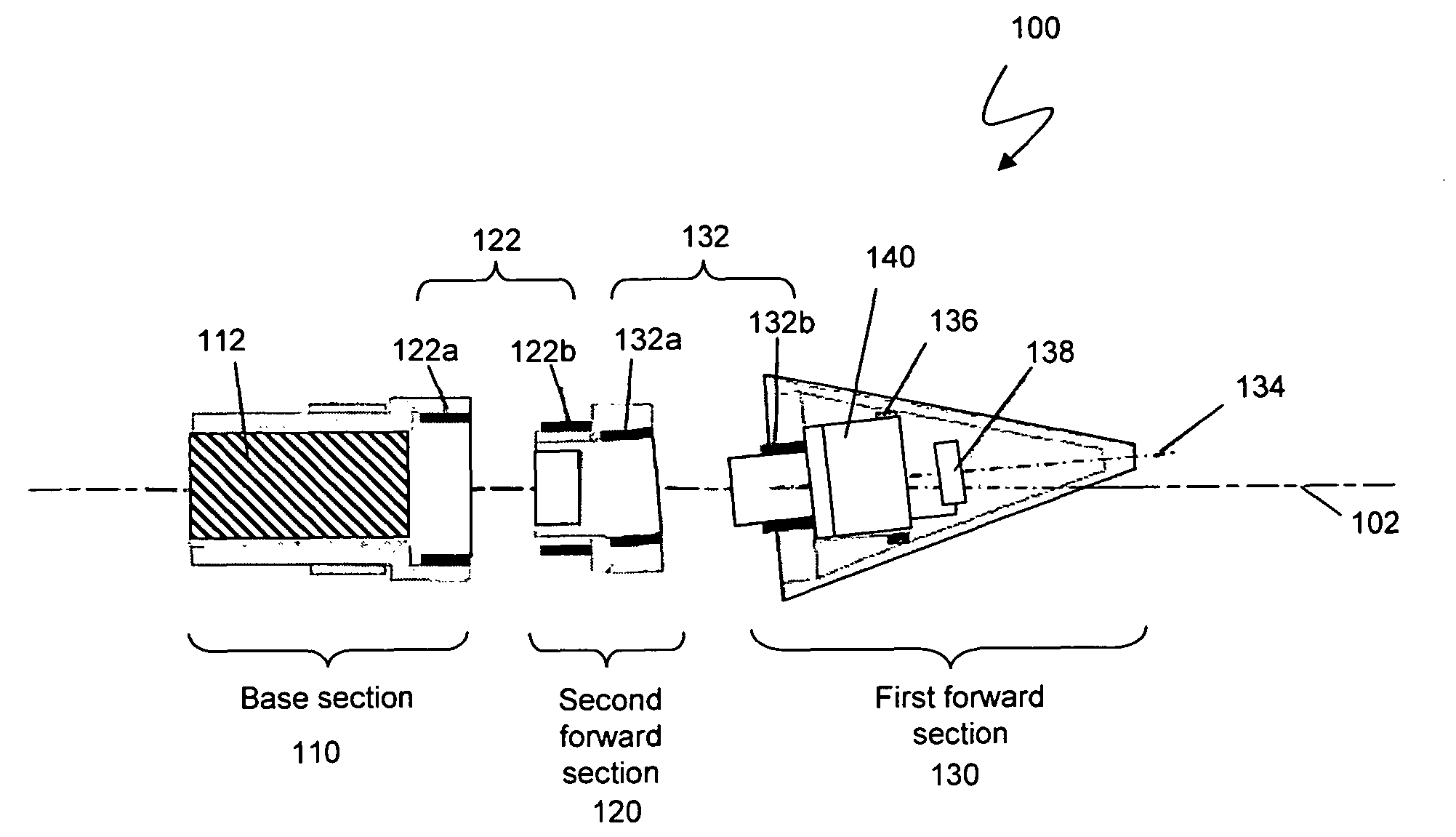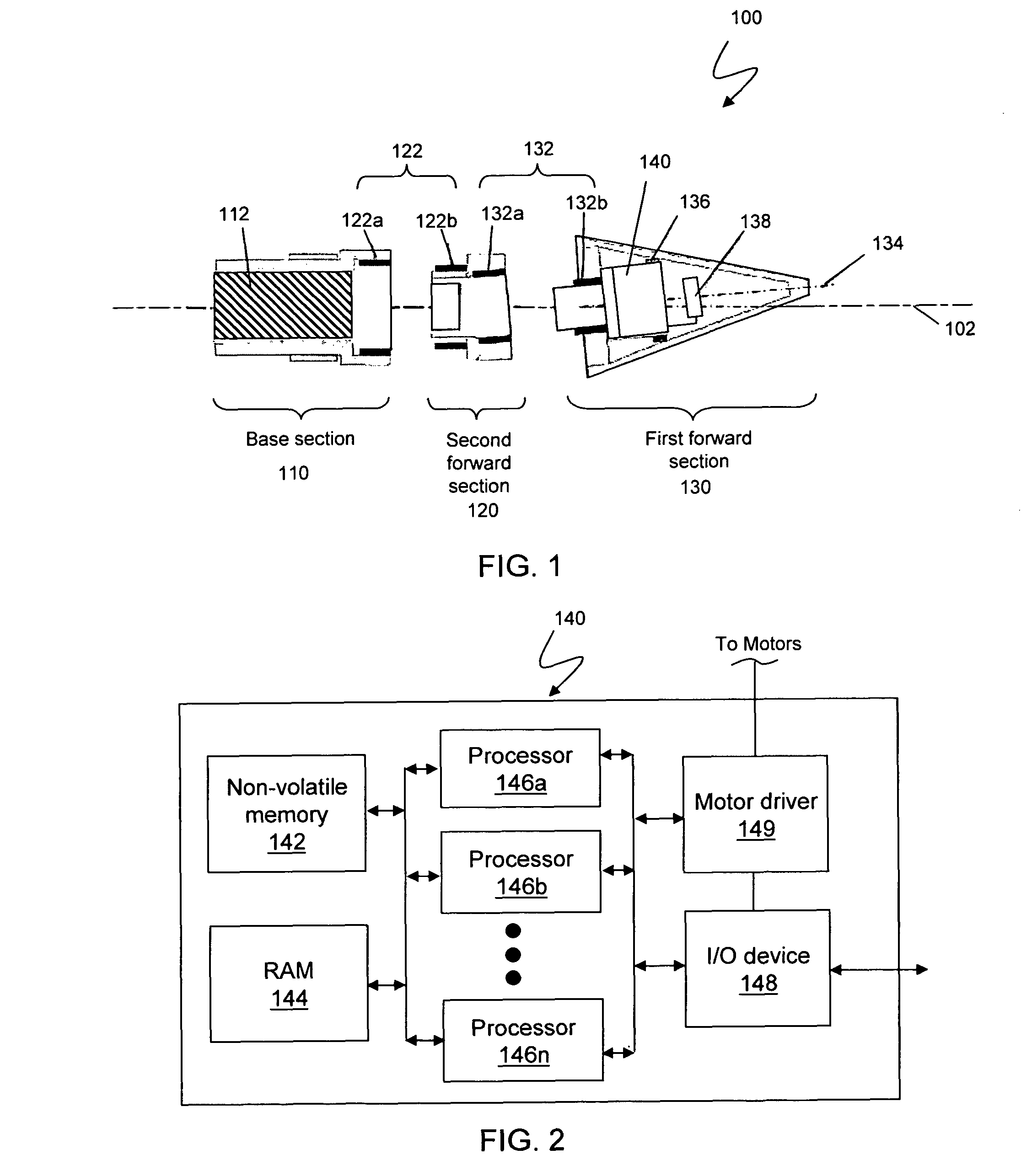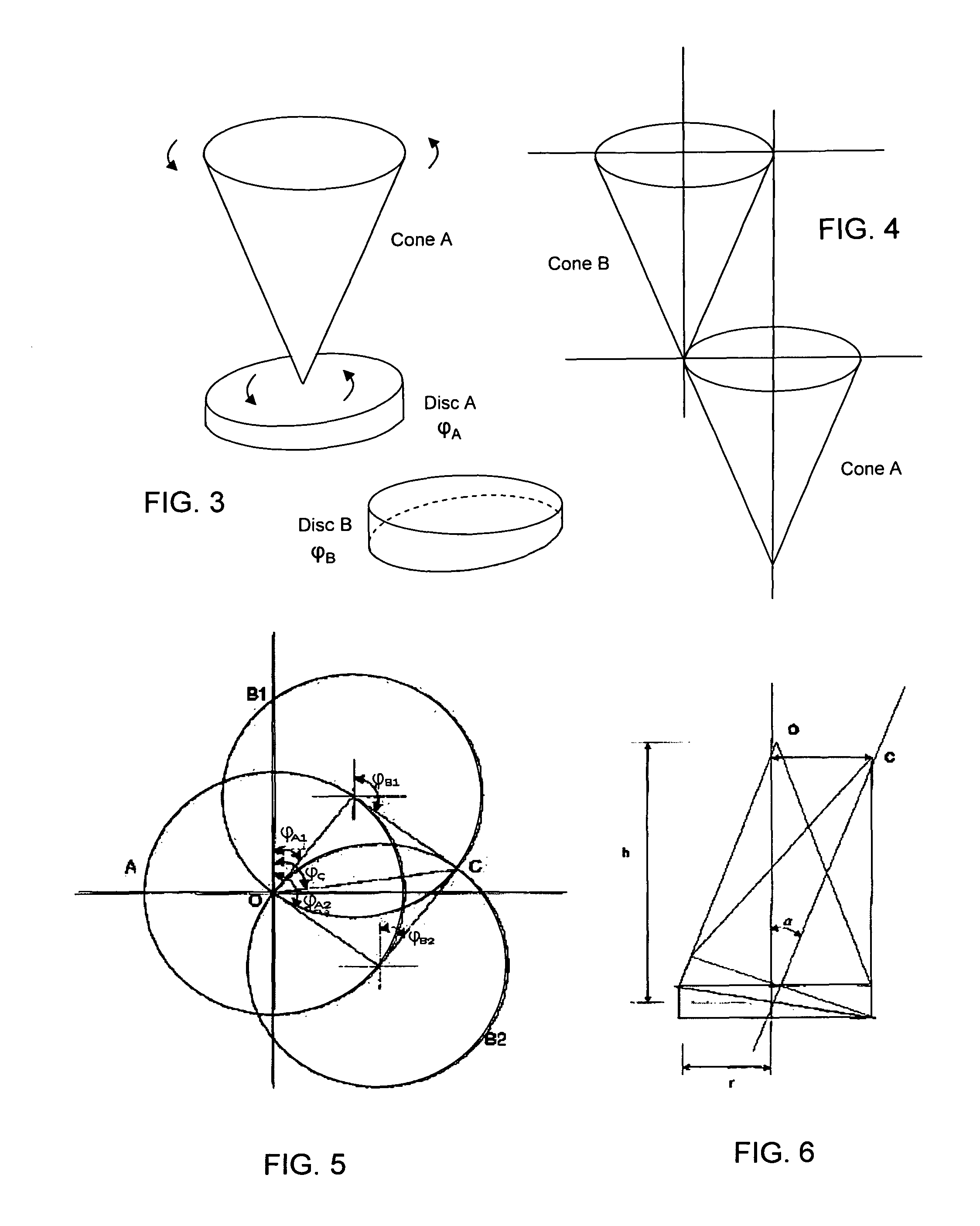Spin stabilized projectile trajectory control
a projectile trajectory and stabilized technology, applied in the field of ballistics, can solve the problems of complex epicyclic motion, inability to adapt the above-described methods to widespread use, and inability to achieve the effect of reducing the probability of a single projectile falling off,
- Summary
- Abstract
- Description
- Claims
- Application Information
AI Technical Summary
Benefits of technology
Problems solved by technology
Method used
Image
Examples
Embodiment Construction
[0024]Referring now to the figures of the drawings, the figures comprise a part of this specification and illustrate exemplary embodiments of the described system. It is to be understood that in some instances various aspects of the system may be shown schematically or may be exaggerated or altered to facilitate an understanding of the system.
[0025]FIG. 1 illustrates an embodiment of a Reconfigurable Nose Control System (RNCS) 100 according to the system described herein. The RNCS 100 may include three sections: a first forward section 130, a second forward section 120 and a base section 110. The base section 110 may interface with a projectile body and include a fuze volume 112 to interface with fuze threads of the projectile body. The base section 110 and the second forward section 120 may include a Roll Motor Generator (RMG) 122, that functions as discussed elsewhere herein and may include other components as part of a roll motor generator assembly. The first forward section 130 ...
PUM
 Login to View More
Login to View More Abstract
Description
Claims
Application Information
 Login to View More
Login to View More - R&D
- Intellectual Property
- Life Sciences
- Materials
- Tech Scout
- Unparalleled Data Quality
- Higher Quality Content
- 60% Fewer Hallucinations
Browse by: Latest US Patents, China's latest patents, Technical Efficacy Thesaurus, Application Domain, Technology Topic, Popular Technical Reports.
© 2025 PatSnap. All rights reserved.Legal|Privacy policy|Modern Slavery Act Transparency Statement|Sitemap|About US| Contact US: help@patsnap.com



